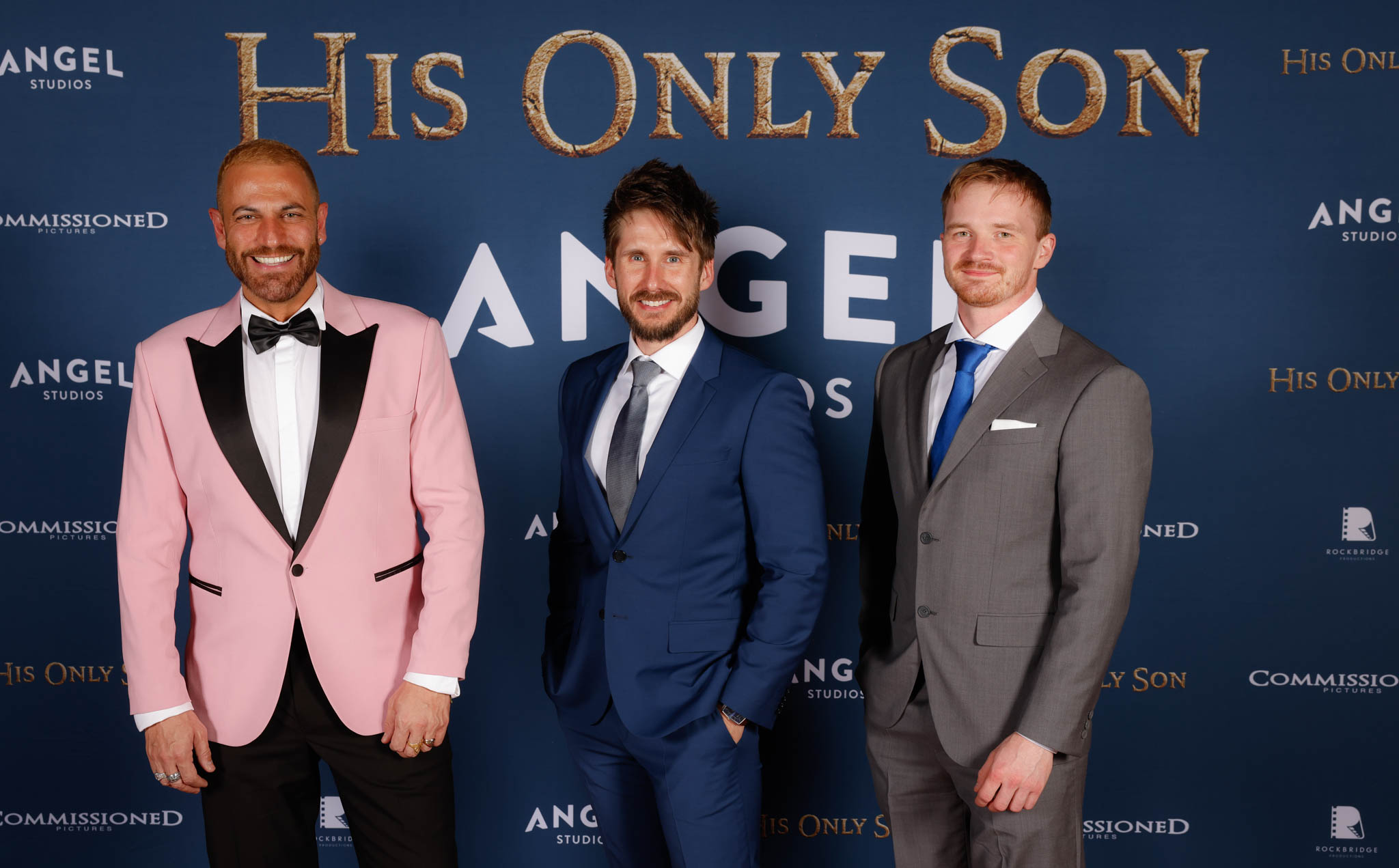We Speak Entertainment
How Biblical epic ‘His Only Son’ became an unlikely box-office hit

‘His Only Son’ depicts one of the more controversial stories from the Old Testament – God commanding Abraham to sacrifice his own son. The feature film digs deep into accounts of Abraham’s life leading up to the birth of his son and then the agonizing burden of taking him to the place of sacrifice. With its rich, character-focused script, the film answers the persistent question: why would God command such a thing?
The movie was shot in the summer of 2019 with Nicolas Mouawad (a highly acclaimed TV star in the Middle East) as Abraham and Sara Seyed (from Netflix’s ‘Young Wallander’) as Sarah. The production was plagued by hold-ups – illness, budget constraints and, of course, the pandemic – but when it opened on 31 March this year it became a critical and financial success.
Reaching the number-three spot in the US box office on its opening weekend, it earned an ‘A’ on CinemaScore, a 96% audience score on Rotten Tomatoes, and made $12 million in takings. The film also reached the #1 spot theatrically in Lebanon and is set to premiere in many other international regions, including LATAM, Europe and South Korea.
The original idea for the project came from writer/director David Helling, who brought it to the film’s original producer, Michael Kaney. However, as Michael’s health declined, Roman Medjanov was brought on as a full-time producer to take the lead on the project and guarantee its completion.
Producing the film was not an easy task. Roman, along with David, who was directing, had to figure out how to put a biblical epic on screen with a micro-production budget. This began a year-long pre-production stage where locations were found and secured, necessary crew positions determined and hired, cast discovered, production design built and sourced, and the schedule squeezed to fit the budget.

Once the production started, there was no room for error. Roman had to strategically stay ahead of every decision made on set each day, to ensure the film’s completion on time without overages. The film was shot in the desert areas north of Los Angeles and proved to be a trying production; scorching summer heat, remote locations only accessible by foot, nightshoots, on-screen animals, stunts, and underwater photography.
During post-production it became apparent that the crucial last scene had to be reshot. Roman had to find a way to acquire new funding and safely film the remaining shots in the midst of a pandemic when the world had shut down. Finally, after years of waiting patiently for the VFX to be complete, numerous distribution talks began in 2022. Thankfully, Angel Studios, the studio behind the smash hit ‘The Chosen’, came in with a promise of a wide theatrical distribution and Easter-season release – leading the film to the success it has achieved so far.
Roman Medjanov is an accomplished producer; besides making an unlikely box-office hit with ‘His Only Son’, Roman’s first feature-length film was a documentary called ‘Story of Sales.’ Made on a tight budget, the film had an incredible ROI of over $20 million. This was the first documentary to tackle the subject of sales, and it premiered at Dreamforce, known as ‘the Golden Globes of tech’.
In 2023, Roman had another film premiere, ‘Rally’, a feature-length documentary depicting one of the most controversial figures in modern San Francisco politics. It had its first screening at the San Francisco International Film Festival, introduced on stage by the city’s Mayor.

Roman is also a full-time producer at RockBridge Productions, where he produces commercials for brands including Spotify, KIA, Clorox, Salesforce and UCSF. He’s won multiple awards for his commercial work, including a Pollie Award, an American Advertising Award, and two Telly Awards in the same year. He has also won awards from Venice Film Awards and Golden Gate International Film Festival for his narrative work.
Following the success of ‘His Only Son,’ the sequel – currently under the working title ‘Jacob’ – has been greenlit. The film is set to begin pre-production later this summer with an anticipated theatrical release date of Easter 2025.
Featured photo credit: Getty Images
We Speak Entertainment
The Unstoppable Rise of Baby Kingpin: Amplifying the Voices of the Voiceless

In the heart of Oakland, California, a powerful new voice is resonating through the hip-hop scene. Baby Kingpin, a rapper born and raised in the historic East Oakland neighborhood, is making a profound impact with his thought-provoking lyrics and compelling message. Driven by a deep sense of purpose, Baby Kingpin is committed to harnessing the power of music to drive positive change and uplift his community.
Rooted in Activism and Music
East Oakland, the birthplace of the Black Panthers, has a rich legacy of activism and social justice that has profoundly shaped Baby Kingpin’s worldview and artistic vision. Drawing inspiration from hip-hop legends like Tupac Shakur, Baby Kingpin is determined to follow in their footsteps and change. His music is a testament to the power of art to inspire and mobilize individuals towards a common goal.
A Deep Connection to the Community
For Baby Kingpin, his connection to the community is at the heart of his music and message. As a representative of the oppressed urban society, he understands the struggles and challenges faced by many individuals around the world. His music is a reflection of this understanding, and he aims to use his platform to uplift and empower those who are often overlooked.

A Vision for a Brighter Future
In the next five years, Baby Kingpin envisions himself playing a pivotal role in the progress of his people worldwide. Driven by a desire to be a voice for the voiceless in oppressed societies globally, he aims to connect with his audience on a spiritual level, using his music to inspire and motivate positive change.
A New Project: Amplifying the Message
Baby Kingpin’s new project is a powerful testament to his commitment to his craft and his community. With lyrics that speak directly to the soul, his music is designed to resonate with listeners and inspire them to take action. Through rhythm and rhyme, Baby Kingpin aims to connect with his audience on a deeper level, fostering a sense of unity and purpose.
A Rising Star in the Hip-Hop World
Baby Kingpin is a rising star in the hip-hop world, and his music is a powerful reflection of his values and vision. With a deep connection to his community and a commitment to social justice, Baby Kingpin is poised to make a lasting impact on the music industry. As he continues to grow and evolve as an artist, one thing is clear: Baby Kingpin is a voice for the voiceless, and his music will be felt for years to come.
Follow Baby Kingpin:
- Instagram: @baby_kingpin
Through his music and message, Baby Kingpin is inspiring a new generation of artists and activists. His commitment to social justice and his community is a testament to the power of hip-hop to drive positive change. As Baby Kingpin continues to rise to prominence, his impact will undoubtedly be felt far beyond the music industry.
-

 We Speak Soccer1 week ago
We Speak Soccer1 week agoFrom Small Steps to Big Goals: How Alianna-Reyne Basa Became a Fearless Striker with a Champion’s Heart
-

 We Speak Music3 days ago
We Speak Music3 days agoTIHANE dances with a Python in video for wildly alive new single ‘Throw It Back’
-

 We Speak Coaches2 days ago
We Speak Coaches2 days agoBuilding Champions On and Off the Court: The Heart and Dedication of a True Basketball Mentor
-

 We Speak Volleyball1 week ago
We Speak Volleyball1 week agoEyes on the Ball, Heart in the Game: Ryan Jomo’s Volleyball Journey as a Libero Who Refused to Settle for Less





















